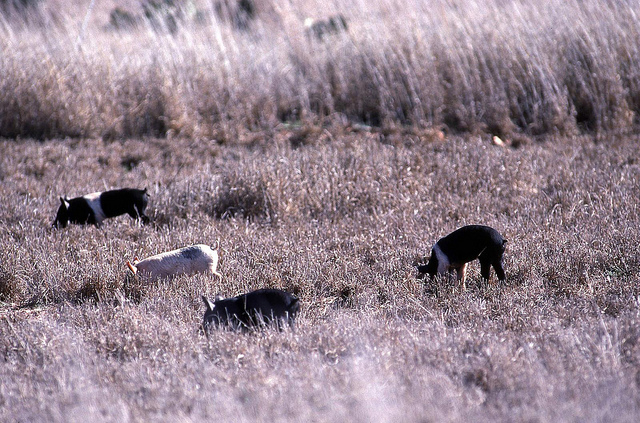Challenges of Controlling Feral Swine
This is Passport
Trapping and hunting are not effective controls against feral pigs.
These methods have not been able to reduce the geographic spread and the increase and abundance of feral pigs in our state, nationwide, and – I’m sorry to say – globally.
Justin Foster, research coordinator at TPWD for region two, says we need new tools to combat the pigs. The agency is evaluating sodium nitrite based pig toxicants.
What we don’t have is a tremendous amount of information that tells us that we can deliver any pesticide safely, reliably and humanely.
They’re collecting that data now. During one field test the pigs dropped baits, perhaps detecting a difference between the placebo and poison versions. This lead to unintended costs for passerine birds.
And so, as this bait was being dropped, and those feral pigs were going back to the feeder to try some more—it wasn’t so bad that they weren’t trying more—they were trampling the bait that had been dropped. And that bait had some grain in it. We assume those passerine birds were targeting that grain.
Researchers do not take such losses lightly, and continue to work on a reliable and humane protocol.
The Wildlife Restoration program supports our series and funds the development of toxicants and delivery strategies for controlling feral hogs in Texas.
For Texas Parks and Wildlife, I’m Cecilia Nasti.



 Passport to Texas is a
Passport to Texas is a  Passport to Texas is made available by:
Passport to Texas is made available by: